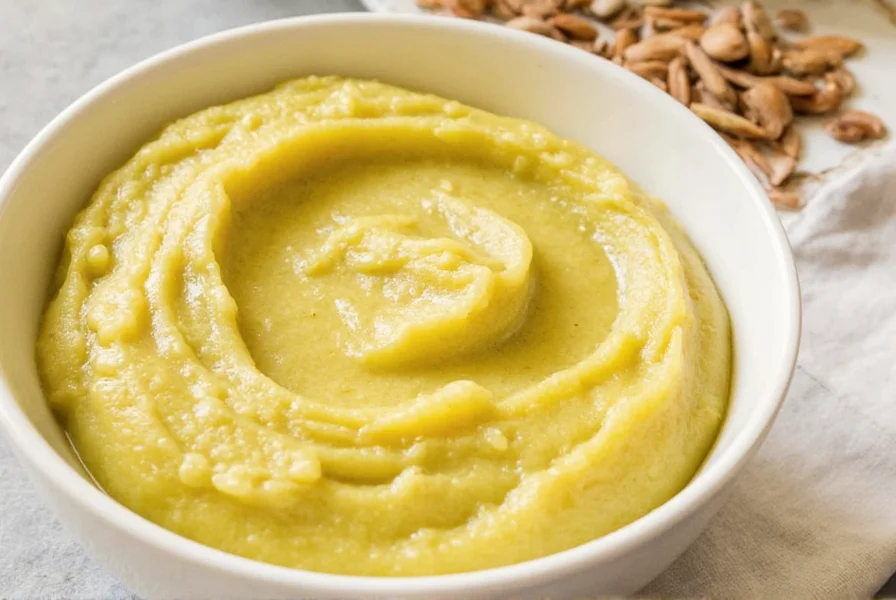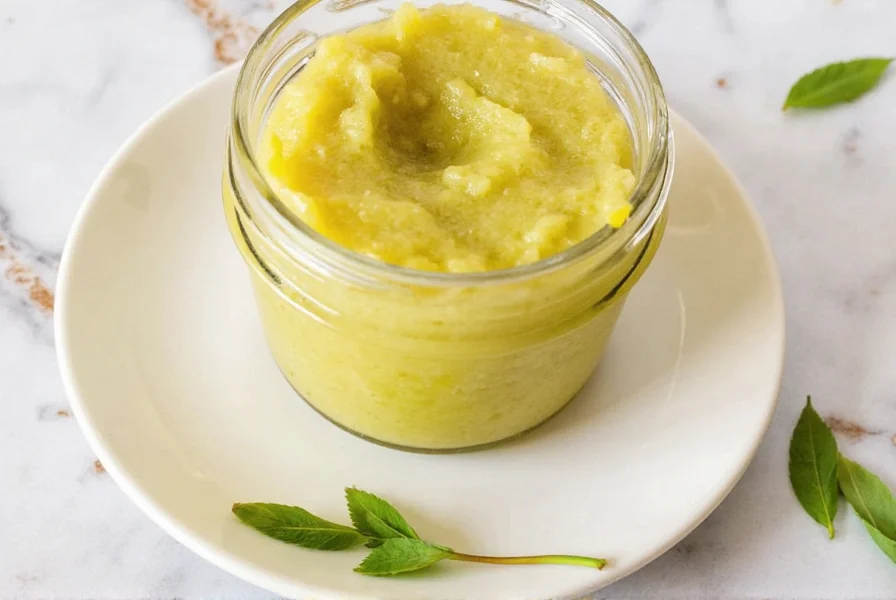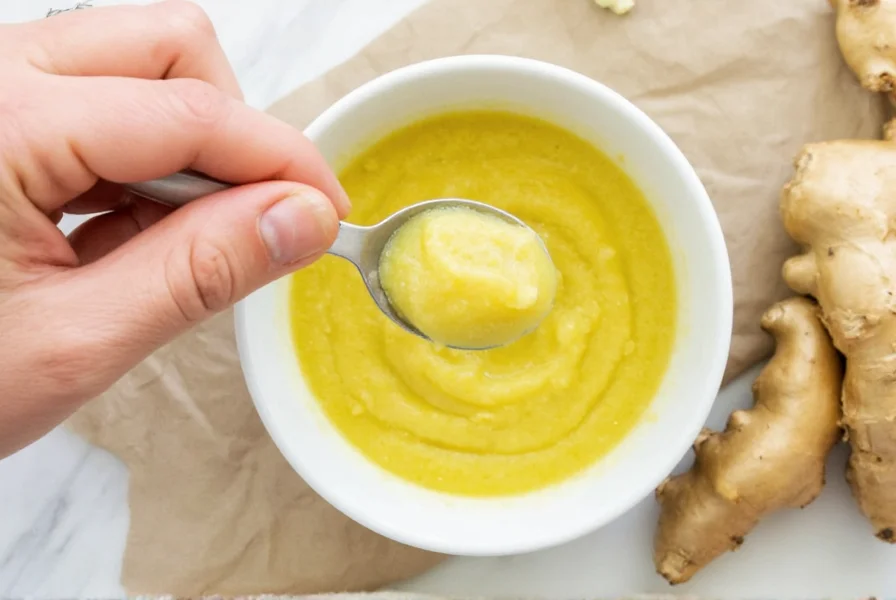The quickest way to make ginger garlic paste is to blend equal parts peeled ginger and garlic with a little water or oil until smooth. For a basic recipe, use 1 cup (about 200g) of peeled ginger and 1 cup (about 150g) of peeled garlic cloves with 2-3 tablespoons of water or neutral oil. This homemade paste lasts 2-3 weeks refrigerated or up to 6 months frozen, providing fresher flavor and no preservatives compared to store-bought versions.
Making ginger garlic paste at home transforms your cooking with vibrant, fresh flavors that surpass store-bought alternatives. This essential ingredient forms the aromatic base for countless dishes across Indian, Southeast Asian, and Middle Eastern cuisines. Unlike commercial versions that often contain preservatives and stabilizers, homemade ginger garlic paste delivers pure, unadulterated flavor that elevates everything from curries to marinades.
Why Make Your Own Ginger Garlic Paste
Creating your own ginger garlic paste offers several advantages over store-bought options. Freshly prepared paste has a brighter, more complex flavor profile without the metallic aftertaste sometimes found in canned versions. You control the quality of ingredients, ensuring no additives or preservatives. Making it in bulk saves significant time during meal preparation—you'll have this flavor foundation ready whenever inspiration strikes.
Essential Ingredients and Equipment
For the best ginger garlic paste recipe, you'll need:
- Fresh ginger root (choose firm, smooth-skinned pieces)
- Fresh garlic cloves (plump and firm)
- Water or neutral oil (like canola or grapeseed)
- Optional: Pinch of salt as a preservative
Basic equipment includes a food processor or high-speed blender, sharp peeler or spoon for ginger, cutting board, and storage containers. A microplane works exceptionally well for creating an ultra-smooth texture.
| Ingredient | Measurement | Preparation Tip |
|---|---|---|
| Ginger | 1 cup (200g) | Peel with spoon for less waste |
| Garlic | 1 cup (150g) | Remove germ for milder flavor |
| Liquid | 2-3 tbsp | Start with less, add as needed |
Step-by-Step Ginger Garlic Paste Recipe
Follow these simple steps for perfect ginger garlic paste every time:
- Prepare ingredients: Peel 1 cup of ginger using a spoon (slides easily under skin) and 1 cup of garlic cloves. For milder flavor, remove the green germ from garlic cloves.
- Chop roughly: Cut ginger into 1-inch pieces. No need to chop garlic.
- Blend: Place ingredients in food processor with 2 tablespoons water or oil. Process until smooth, scraping down sides as needed.
- Adjust consistency: Add remaining liquid only if necessary to achieve smooth, pourable texture.
- Store immediately: Transfer to clean containers following storage instructions below.

Storage Techniques for Maximum Freshness
Proper storage determines your ginger garlic paste shelf life. For refrigeration:
- Use airtight glass containers (plastic can absorb odors)
- Press plastic wrap directly onto surface before sealing
- Store for 2-3 weeks in the coldest part of your refrigerator
For longer preservation, freezing works best:
- Pour paste into ice cube trays, cover, and freeze
- Once solid, transfer cubes to freezer bags
- Store for 4-6 months with minimal flavor loss
- Thaw cubes as needed for recipes
Culinary Applications and Flavor Variations
This versatile paste enhances countless dishes. Use it as:
- The flavor base for curries and stews (add early in cooking)
- A marinade component for meats and vegetables
- An ingredient in salad dressings and dips
- A flavor booster for soups and sauces
Experiment with these ginger garlic paste variations:
- Spiced version: Add 1 teaspoon cumin seeds while blending
- Lemon-infused: Blend in 2 tablespoons lemon juice for brighter flavor
- Mild version: Use 3 parts ginger to 1 part garlic for less intense flavor
- Oil-preserved: Cover finished paste with thin oil layer before refrigerating

Troubleshooting Common Issues
Even simple recipes can present challenges. Here's how to solve common ginger garlic paste problems:
Issue: Paste separates after storage
Solution: This is natural. Stir well before using. Adding a small amount of oil during blending helps emulsify.
Issue: Bitter taste
Solution: You likely included garlic germs. Next time, remove the green sprout from each clove for milder flavor.
Issue: Mold development
Solution: Ensure containers are completely dry before filling. Always use clean utensils when scooping out paste.
Health Benefits of Fresh Ginger Garlic Paste
Beyond flavor, this combination offers notable health properties. Ginger contains gingerol, which has anti-inflammatory effects, while garlic provides allicin with potential cardiovascular benefits. Fresh preparation preserves more active compounds than dried alternatives. The paste form makes these beneficial compounds more bioavailable than using whole ingredients.
Frequently Asked Questions
Can I make ginger garlic paste without a food processor?
Yes, you can make ginger garlic paste without specialized equipment. Finely mince both ingredients with a sharp knife, then use a mortar and pestle to grind them into a paste. This traditional method actually develops better flavor through manual grinding, though it requires more effort. Start with small amounts and work in batches for best results.
What's the ideal ginger to garlic ratio for paste?
The standard 1:1 ratio (equal parts ginger and garlic by volume) works well for most applications. For milder flavor, use a 3:1 ginger to garlic ratio. For more pungent dishes, try 1:2 (more garlic). The best ginger garlic paste ratio depends on your recipe and personal preference—adjust based on whether you're making delicate sauces or robust curries.
How can I tell if my ginger garlic paste has gone bad?
Signs of spoiled ginger garlic paste include visible mold, separation that doesn't reincorporate when stirred, sour or unpleasant odor, and color changes (particularly darkening). Properly stored paste should maintain a vibrant yellow-white color. If you notice any off smells or appearances, discard the entire container as bacteria may be present even in unaffected portions.
Can I substitute ginger garlic paste for fresh ingredients?
Yes, you can substitute ginger garlic paste for fresh ingredients using a 1:3 ratio. One tablespoon of paste equals approximately three tablespoons of freshly grated ginger and minced garlic combined. Remember that paste has more concentrated flavor, so start with less and adjust to taste. The substitution works particularly well in liquid-based dishes like curries and soups.
Does cooking affect the health benefits of ginger garlic paste?
Cooking does affect certain compounds in ginger garlic paste. Allicin in garlic breaks down with heat, but transforms into other beneficial compounds. Ginger's gingerol converts to zingerone when cooked, which still offers anti-inflammatory properties. For maximum health benefits, add some paste both during cooking and as a finishing touch. The combination of raw and cooked applications provides the broadest range of health-promoting compounds.











 浙公网安备
33010002000092号
浙公网安备
33010002000092号 浙B2-20120091-4
浙B2-20120091-4